You’ve completed the interview stage. The hard work should really be behind you, but this isn’t always the case. In many ways, you’re just getting started. You’ve now met with the candidates and asked them a wide range of questions to determine their suitability for the role, it’s time to make some difficult decisions.
Hiring the right candidate can make a significant difference to your business. And hiring the wrong candidate can be seriously disruptive. So, before you make this important decision, consider the following steps. Having a plan in place will help you to avoid making decisions based on instincts and feelings, which can often be incorrect.
Ask if you need to broaden your search
You don’t always have to select from the pool of candidates you have interviewed. Sometimes your instincts will tell you that you haven’t yet met the right candidate. In this instance, you should let the candidates know they are unsuccessful before you continue seeking new applicants. This will help to avoid any confusion and allow the candidates to focus their attention elsewhere.
If your first round of interviews did not yield the results you were looking for, ask yourself what changes you could make to the job description to attract candidates that are closer to what you want. In most cases, it’s because your job description is too broad rather than it being too specific.
Compare notes with your team
If you interviewed the candidates together, it’s time to sit down with your colleagues and compare notes. This is the ideal opportunity to decide if you had the same first impressions, if the same strengths stood out, and if you had the same doubts about a candidate.
Hearing another person’s perspective on an interview can help to broaden your mind and confirm or dispel any opinions you might have. If you interviewed the candidate alone, you can also ask for a second opinion from a colleague. Just bear in mind that they haven’t met the candidate, so you may only be confirming your initial thoughts.
Rule out the weakest candidates
Sometimes you have a gut instinct that candidates don’t have what it takes. You can rule these out immediately, as there is no sense in keeping them in mind if you know there are stronger candidates to choose from.
The kindest thing to do at this stage would be to inform them they have been unsuccessful so that they can focus their attention on their next opportunity. There’s little sense in keeping candidates waiting around just to let them down.
Return to the job description
If you decide you are going to hire from the candidates you have already interviewed, return to the original job description next. Go through each shortlisted candidate and see how they stack up against the original job description. Be ruthless and give them an immediate yes or no for every skill and quality required for the role.
You can also look at a candidate’s potential in each area. So, while they might not have the skills they need right now, ask yourself if they have the potential to be trained. A key indicator of this is how motivated the candidate is. If they are highly motivated and have shown an aptitude for picking up new skills and concepts in the past, this is a good sign.
Put the candidates in order of preference
By now, you probably have a few standout candidates that are looking more promising in your mind. It’s time to start trying to put them in order or preference. This will help you to look at each one more critically and start to identify reasons they might not be suitable for the role.
Remember, you shouldn’t only focus on the past and present but also the future. You need to look past the now and think about the potential that each candidate has demonstrated. This will allow you to hire candidates that will grow with your company, rather than candidates that might quickly outgrow your company.
Make a list of doubts
You now have a favourite candidate and a second choice. It’s time to pick apart each one to determine if you have these in the right order. No candidate is perfect for the role, and if they are, there is a chance you are hiring someone who is overqualified for the role.
At this stage, pick apart each candidate and make a list of any doubts you might have. Your doubts could include things like:
Is the candidate overqualified?
Is the candidate looking for a long-term opportunity?
Is the candidate going to fit in with the wider team?
Can the candidate be trained?
Do they have the right level of experience?
Is their experience applicable to the role?
Are they likely to accept the role?
Were they engaged with the interview process?
As you make your list of doubts about each candidate, you might find that your second choice is actually your first choice. It could also bring in an unexpected third choice. At this stage, you should be able to make a decision about which candidate you’d like to move forward with.
Ask for references
Before you can make a formal offer, you need to check references. If the candidate is currently in a role, you should always confirm with them before asking for references. This will help to avoid any awkward interactions if they haven’t yet told their employer they are interviewing elsewhere.
While the majority of employers will provide a satisfactory reference, you should always be prepared for what to do if the reference is negative. Sometimes, an employer will decline to give a reference and instead simply confirm that the individual worked for them during specific dates.
If the candidate gets a bad reference or you cannot secure a reference, this might not be the end of the road. You might already be aware of the candidate’s issues with their employer, so you might be expecting a bad reference. Unless your company policy states otherwise, you might be able to go ahead with the hire, despite the bad reference.
Make a formal offer
You’re now ready to make a formal offer. While it might feel like the end of the recruitment journey, this isn’t always the case. The candidate still needs to accept the offer and negotiate their salary. This is why many employers do not turn down their final selection until the negotiations are complete. It’s always possible that the perfect candidate will ask for more than you can reasonably offer and be more than willing to walk away.
Once the offer is accepted, you can now return to the final candidates and let them know they were unsuccessful. You should always try to give feedback on their interview if possible. And if the only reason they didn’t get the job is that someone else was more qualified, this never hurts to share. It can help them to put their loss into perspective and go into the next interview with a little more confidence.
The onboarding process
Once a candidate has accepted the role, you need to select a start date and then begin planning the onboarding process. A well-planned onboarding process will help the candidate to settle into their role quickly.
It should always start by introducing them to the members of the team. If you can do this in an informal setting, that’s even better. This will help them to feel at ease and learn who is the best person to approach for help.
You should also give them time to become accustomed to the systems you use before you start introducing work tasks. A common mistake that employers make when hiring new employees is to assume that once they have made a decision, the work is over. In reality, the best new job placements happen when an employer takes the long-term approach to the recruitment process.
Until an employee has completed their probation and feels confident in their new role, it is still very much part of the recruitment process. By taking this long-term approach to recruitment, you’ll be able to attract and hire candidates that will stick with your company for the long term.
Key takeaway
When hiring for a new role, you need to get specific in the job description to make sure you are attracting the right candidates.
Always get a second opinion on the candidates to make sure you aren’t falling into the trap of hiring people who are similar to you.
Don’t be afraid to restart the recruitment process if you haven’t interviewed the right candidate in the first round.
Quickly narrow it down to three and then assess which is your first, second and third choice.
Don’t let choice number two and three know they have been unsuccessful until the first candidate has accepted their role.
Treat the onboarding process as part of the recruitment process if you want candidates to stick with your company in the long term.


